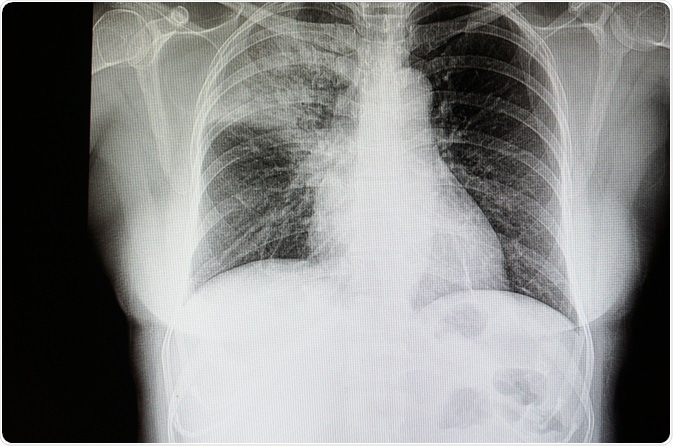Pneumonia is a common lung infection that affects millions of people worldwide. Pneumonia is most often caused by the bacteria Streptococcus pneumonia, but infection can also be due to a number of viruses, fungi, and mycoplasmas.

Image Credit: Tomatheart / Shutterstock.com
Worldwide, infection rates are highest in developing nations, particularly in countries in Southeast Asia and Africa.
When a patient has access to proper medical care, pneumonia is highly treatable and the prognosis for recovery is good. However, in developing nations where the medical infrastructure may be suboptimal, sanitation is poor, and rates of poverty are high, pneumonia infection can be a serious medical condition resulting in high rates of mortality. Children are particularly susceptible.
Pneumonia in children
Worldwide, pneumonia is the leading cause of death in children under age 5. It has long been known that acute respiratory infections, including pneumonia and others, were responsible for a large number of deaths in children throughout the world.
One study estimated that nearly 4 million children died each year of acute respiratory infections in the period from 1980 to 1990. Because of this, the World Health Organization (WHO) set up the Child Health Epidemiology Reference Group (CHERG) to further study the incidence of childhood pneumonia.
CHERG performed systematic reviews to compile pneumonia statistics in children under age 5 for the year 2000. The group found that there were approximately 150 million new episodes of pneumonia in children under 5. Of these 150 million new cases, approximately 4 million occurred in developed countries, while the rest occurred in developing nations.
Approximately 8.7% of children with pneumonia require hospitalization. More than half of all worldwide cases of childhood pneumonia occurred in just five countries including China, India, Pakistan, Bangladesh, Indonesia, and Nigeria. Southeast Asia and Africa had the highest overall incidence rates (0.36 and 0.33 episodes per child-year, respectively), while Europe had the lowest rate of 0.06 episodes per child-year.
It is strongly suspected that the overall number of cases of childhood pneumonia was underestimated in this study because of the strict inclusion criteria and the difficulty of determining the cause of death in infants.
Pneumonia In Children - Signs, Causes & Prevention
Factors that increased the risk of developing childhood pneumonia included malnutrition, low birth weight, lack of breastfeeding, crowded living quarters, indoor air pollution, and lack of measles vaccination.
Other possible contributing factors included a parent who smoked, the level of\ education in the parents, the presence of pre-existing medical conditions such as asthma, and annual rainfall levels.
Pneumonia in adults
In developed nations, pneumonia is a serious concern in adults over the age of 65. One study reported increased rates of pneumonia-associated hospitalizations in the United States, United Kingdom, Denmark, and the Netherlands. In the United States in 2010, approximately 1.1 million patients were hospitalized for pneumonia and the average length of hospital stay was 5.2 days. Taken together, approximately 50,000 people died at the end of 2010 in this nation.
In England, the number of hospitalizations attributable to pneumonia increased by 34% during the period from 1997 to 2005. This increase was particularly notable in older adults. According to national statistics, approximately 26,000 people died from pneumonia and influenza in England and Wales in 2013.
The increasing rate of pneumonia found in developed nations may be linked to the aging population and to a rise in other chronic diseases such as diabetes, heart disease, and other medical conditions that weaken the immune system.
References
Further Reading
Last Updated: Dec 1, 2022